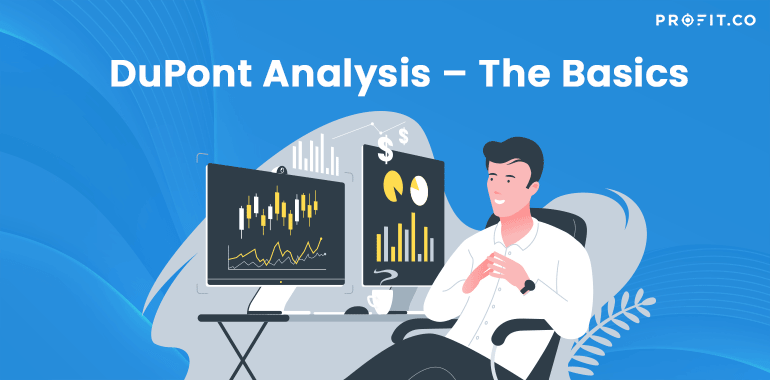While the name may sound very fancy, this is actually a crucial method to understand the finance point of a company. Also referred to as the “DuPont model,” this financial ratio involves the ROE (return on equity) ratio – which is directly related to the company’s ability to increase its equity.
To put it as simply as possible, the return equity – the factor that actually concerns us – tells you exactly how much tax profit you earn considering your total shareholder equity. It breaks down the equity return ratio so that the company can increase their investor return.
The DuPont Analysis is generally concerned with three return on equity ratio components: the profit margin, the financial leverage, and the total asset turnover. Based on how well these three perform, the company may increase its return on equity ratio.
The technique was developed by the DuPont Corporation – and the name has remained ever since.
DuPont Analysis Formula
In order to calculate the ROE ratio with the DuPont analysis, you will have to multiply the three above-mentioned components: asset turnover, net profit margin, and equity multiplier (a.k.a “financial leverage”). As a result, the formula will look something like this:
As you may have noticed, figuring out these three is the key to increasing the profit of your company and make your wealth grow. Sometimes, even if a promising company has a bad manager, it can be taken over by a new one who can better pull these three levers.
Sadly, these numbers cannot generally be found on financial statements – which is why you need a manager with a keen eye. After that, they will have to calculate those results themselves. For example, the profit margin is resulted after dividing the net income by the net sales. Both of these will appear on the income statement, so you can get a number.
The financial leverage also is not found anywhere. However, you will be able to see the total assets, as well as the total equity on the balance sheet. The leverage is found after dividing the two.
Analyzing the Technique
This model was created by the DuPont Company in an attempt to analyze the ROE and improve the business performance. Technically speaking, the investors are not really interested in who brings the largest numbers – but what caused those numbers to begin with. Do they notice any improvement in the numbers? Can they be improved? For example, if they look at the ROE formula and they see that the numbers are low, they can use this model to see where exactly lays the problem.
Once the pressing problem has been found, the manager can address the shareholders or try to correct this problem. In most cases, a low ROE is no reason of concern for the investors; the issue can be solved in two months at most. For example, an accelerated depreciation can cause the ROE to go down significantly – but these can be solved easily throughout time.
Overall, it is all an issue of management. A good manager will be able to properly understand the DuPont model.
